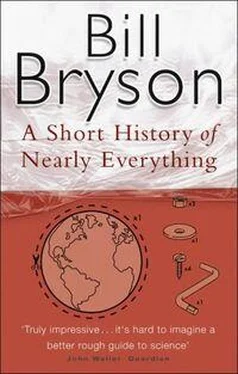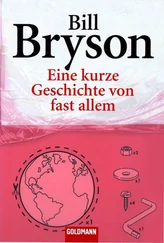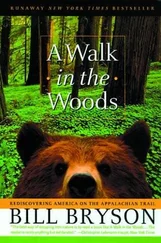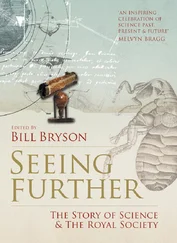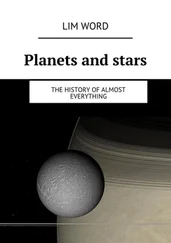Fossils and the History of Life (Simpson)
Fowler, W. A.
France: French Royal Academy of Sciences, Peruvian expedition of 1735; Reign of Terror; transits of Venus expeditions
francium
Franklin, Benjamin
Franklin, Rosalind
Fraser, John
Frayn, Michael
fungi; molds
galaxies: evolving; Hubble and discovery of; Milky Way; NGC1365; number of; number of stars in; recessional velocity
Gamow, George
Gap in Nature, A (Flannery amp; Schouten)
Gehrels, Tom
Geiger, Hans
Gell-Mann, Murray
Genera of North American Plants (Nuttall)
General Chemistry (Ebbing)
genetics: chromosomes; commonality of human; Darwin and; DNA; genes; hox genes; human genome; Human Genome Project; human proteome; mitochondrial DNA; Mendel, Gregor and; Modern Synthesis; Morgan’s fruit fly experiments; sex drive and replicating. See also DNA; humans
Geological Society (London)
geology; baked apple theory; British popularity of; catastrophism vs. uniformitarianism; convection; dating techniques; drilling through Earth’s crust, attempts; divisions of time in (eras, epochs, periods); Earth’s crust, early burst theory; Earth, interior of; Great Devonian Controversy; fossil evidence; fossils, marine; ice ages; iridium layer; isostasy; kimberlite pipes; KT boundary; Moho discontinuity; Mohole drilling; Neptunists vs. Plutonists; opponents to impact theory; plate tectonics; rocks, oldest; rocks, units of; Smith’s map of British rock strata
giant squid
Gibbs, J. Willard
glass
Glicken, Harry
Godfray, G. H.
Gold, Thomas
Goldilocks effect
Gould, John
Gould, Stephen Jay
gravity; general theory of relativity and; gravitons; measuring the mass of Earth and; Newton and laws of; as weak force
Great Chain of Being
Great Devonian Controversy, The (Rudwick)
Great Spanish Flu epidemic
Greer, Frank
Gregory, J. W.
Gribbin, John and Mary
Groves, Colin
Gutenberg, Beno
Guth, Alan
Guyot, Arnold
Habeler, Peter
Hadley, George
Haeckel, Ernst
Haldane, J. B. S.
Haldane, John Scott
Hale-Bopp comet
Hallam, Arthur
Halley, Edmond
Halley’s comet
Hapgood, Charles
Harding, Rosalind
Harrington, Robert
Harrison, John
Hart, Michael
Haughton, Samuel
Hawaii, extinctions on
Hawking, Stephen
Heisenberg, Werner
Helin, Eleanor
helium
Helmholtz, Hermann von
Herschel, William
Hess, Harry
Hessler, Robert
Higgs, Peter
Hildebrand, Alan
Hindenburg
Hipparchus of Nicaea
Historia Generalis Plantarum (Ray)
History and Use of Our Earth’s Chemical Elements, The (Krebs)
Holmes, Arthur
Holmyard, E. J.
Hooke, Robert
Hooker, Joseph
How to Know the Mosses and Liverworts (Conard)
Howard, Luke
Hoyle, Fred
Hubble, Edwin; constrant, Ho ; Law; Space Telescope
humans: Australopithecus ; bacteria and; bacterial infections; bipedalism; brain development and size; cells, number of; classification of; common ancestry of; conception; Cro-Magnon; dehydration; DNA; early, mitochondrial DNA record; early, various bipedal hominids; elements in the body; evolution; fossil record; genetic code; heart; Homo erectus (Java Man); Homo habilis ; Homo sapiens ; ice ages and; immune response; individual differences in; life, conditions amenable to; Lucy; mineral requirements; multiregional hypothesis; Neandertal man; Neandertal tools; origin of the species; Peking Man; pressure upon, effects of; salt and; search for early humans; Solo People; speech; tool-making by early man; toxicity of metals; Trinil skullcap; Turkana skeletons; viral infections; water, needed for life; water, percentage of
Humboldt, Alexander von
Hutton, Charles
Hutton, James
Huxley, Aldous
Huxley, T. H.
Hyakutake comet,
Hyde, Jack
hydrogen; atomic number; Avogadro’s number; combustion and; identification of; most abundant element; Rozier’s experiment
ice ages; Agassiz’s theory; Croll’s theory; Earth’s orbit and; human evolution and; landscape and; Little Ice Age; Messinian Salinity Crisis and; Snowball Earth; survival of life and; warming of; Wisconsian ice sheet
Illustrations of the Huttonian Theory of the Earth (Playfair)
Inflationary Universe, The (Gamow)
insects; known species; new discoveries; species, estimated
International Cloud Atlas (Howard)
Isaacs, John
isotope geochemistry
Izett, Glenn
Jardine, Lisa
Jarvik, Erik
Java Man
Jefferson, Thomas
Jeffreys, Alec
Jeffreys, Harold
Jenkin, Fleeming
Johanson, Donald
Johnston, David
Joly, John
Joseph, Lawrence
Jupiter: comet Shoemaker-Levy, impact on; distance from Earth
Kaku, Michio
Kelly, Kevin
Kelvin, Lord
Keynes, John Maynard
kimberlite pipes
Kinsey, Alfred C.
Kolbert, Elizabeth
Köppen, Wladimir
Krebs, Robert E., 108
KT boundary; event and extinctions
Kuiper belt
Kuiper, Gerard,
Kunzig, Robert
Kurlansky, Mark
La Condamine, Charles Marie de,
Lalande, Joseph
Large Magellanic Cloud
Lassa fever
Lavoisier, Antoine-Laurent
Lavoisier, Madame
Lawrence, Ernest
Le Gentil, Guillaume
lead,; age of Earth and; atmospheric; banning; Clean Air Act of 1970; health hazards; isotope; tetraethyl (TEL, gasoline additive)
Leakey, Louis
Leakey, Mary
Leakey, Meave
Leakey, Richard
Leavitt, Henrietta Swan
Lederman, Leon
Leeuwenhoek, Antoni van
Lehmann, Inge
Leibniz, Gottfried von
Lemaitre, Georges
Leonard, F. C.
Levy, David
Lewin, Roger
Lewis, John S.
Lewis, Meriwether
Lewontin, Richard
Libby, Willard
lichens
life: amino acids; bacteria (microbes); Big Birth,; Cambrian explosion; categorization of; cell theory; change and mutation; chemicals or heavy elements for; classification of,; conditions necessary for; creation in the laboratory; database of living organisms; deep sea, and requirements for; Darwinism; Dimetrodon; diversity of; DNA; earliest, character of; on Earth; on Earth, date of origination; on Earth, evolution of, from anaerobic to oxygen-loving; emergence from the sea; eukaryotes; evolution of; extraterrestrial; extremophiles; flying creatures; hyperthermophiles; insects; marine organisms and stability of atmosphere and weather; meteorite theory (panspermia); mitochondria, development of; mystery or miracle of; natural impulse to assemble and; oneness of; oxygen levels and size of creatures; oxygenation of the atmosphere and; planets where possible; proteins and; saltationist theory; species, known; species, origination of; species, unknown; stromatolites, living remnants of 3.5 billion year old life; tetrapods; vertebrates; vertebrates, terrestrial; viruses. See also bacteria; extinctions; fossils; humans
Life: An Unauthorized Biography (Fortey)
Life at the Extremes (Ashcroft)
light: Michelson-Morley experiment; quantum theory; special theory of relativity; speed of, constant; symbol for speed of; as wave
Lightman, Alan
Lincoln, Abraham
Linde, Andrei
Linnaeus, Carolus
Lonely Hearts of the Cosmos (Overbye)
Longitude (Sobel)
Читать дальше
